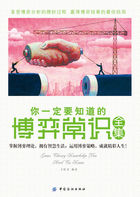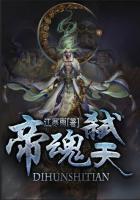The third group consisted of, first, two mules quite covered with cloth of gold, each carrying two chests in which it was said that the duke's treasure was stored, the precious stones he was bringing to his fiancee, and the relics and papal bulls that his father had charged him to convey for him to Louis XII.These were followed by twenty gentlemen dressed in cloth of gold and silver, among whom rode Paul Giordano Orsino and several barons and knights among the chiefs of the state ecclesiastic.
Next came two drums, one rebeck, and four soldiers blowing trumpets and silver clarions; then, in the midst of a party of four-and-twenty lacqueys, dressed half in crimson velvet and half in yellow silk, rode Messire George d'Amboise and Monseigneur the Duke of Valentinois.Caesar was mounted on a handsome tall courser, very richly harnessed, in a robe half red satin and half cloth of gold, embroidered all over with pearls and precious stones; in his cap were two rows of rubies, the size of beans, which reflected so brilliant a light that one might have fancied they were the famous carbuncles of the Arabian Nights; he also wore on his neck a collar worth at least 200,000 livres; indeed, there was no part of him, even down to his boots, that was not laced with gold and edged with pearls.His horse was covered with a cuirass in a pattern of golden foliage of wonderful workmanship, among which there appeared to grow, like flowers, nosegays of pearls and clusters of rubies.
Lastly, bringing up the rear of the magnificent cortege, behind the duke came twenty-four mules with red caparisons bearing his arms, carrying his silver plate, tents, and baggage.
What gave to all the cavalcade an air of most wonderful luxury and extravagance was that the horses and mules were shod with golden shoes, and these were so badly nailed on that more than three-quarters of their number, were lost on the road For this extravagance Caesar was greatly blamed, for it was thought an audacious thing to put on his horses' feet a metal of which king's crowns are made.
But all this pomp had no effect on the lady for whose sake it had been displayed; for when Dona Carlota was told that Caesar Bargia had come to France in the hope of becoming her husband, she replied simply that she would never take a priest far her husband, and, moreover, the son of a priest; a man who was not only an assassin, but a fratricide; not only a man of infamous birth, but still more infamous in his morals and his actions.
But, in default of the haughty lady of Aragon, Caesar soon found another princess of noble blood who consented to be his wife: this was Mademoiselle d'Albret, daughter of the King of Navarre.The marriage, arranged on condition that the pope should pay 200,000ducats dowry to the bride, and should make her brother cardinal, was celebrated on the 10th of May; and on the Whitsunday following the Duke of Valentois received the order of St.Michael, an order founded by Louis XI, and esteemed at this period as the highest in the gift of the kings of France.The news of this marriage, which made an alliance with Louis XII certain, was received with great joy by the pope, who at once gave orders far bonfires and illuminations all over the town.
Louis XII was not only grateful to the pope for dissolving his marriage with Jeanne of France and authorizing his union with Anne of Brittany, but he considered it indispensable to his designs in Italy to have the pope as his ally.So he promised the Duke of Valentinois to put three hundred lances at his disposal, as soon as he had made an entry into Milan, to be used to further his own private interests, and against whomsoever he pleased except only the allies of France.
The conquest of Milan should be undertaken so soon as Louis felt assured of the support of the Venetians, or at least of their neutrality, and he had sent them ambassadors authorised to promise in his name the restoration of Cremona and Ghiera d'Adda when he had completed the conquest of Lombardy.















